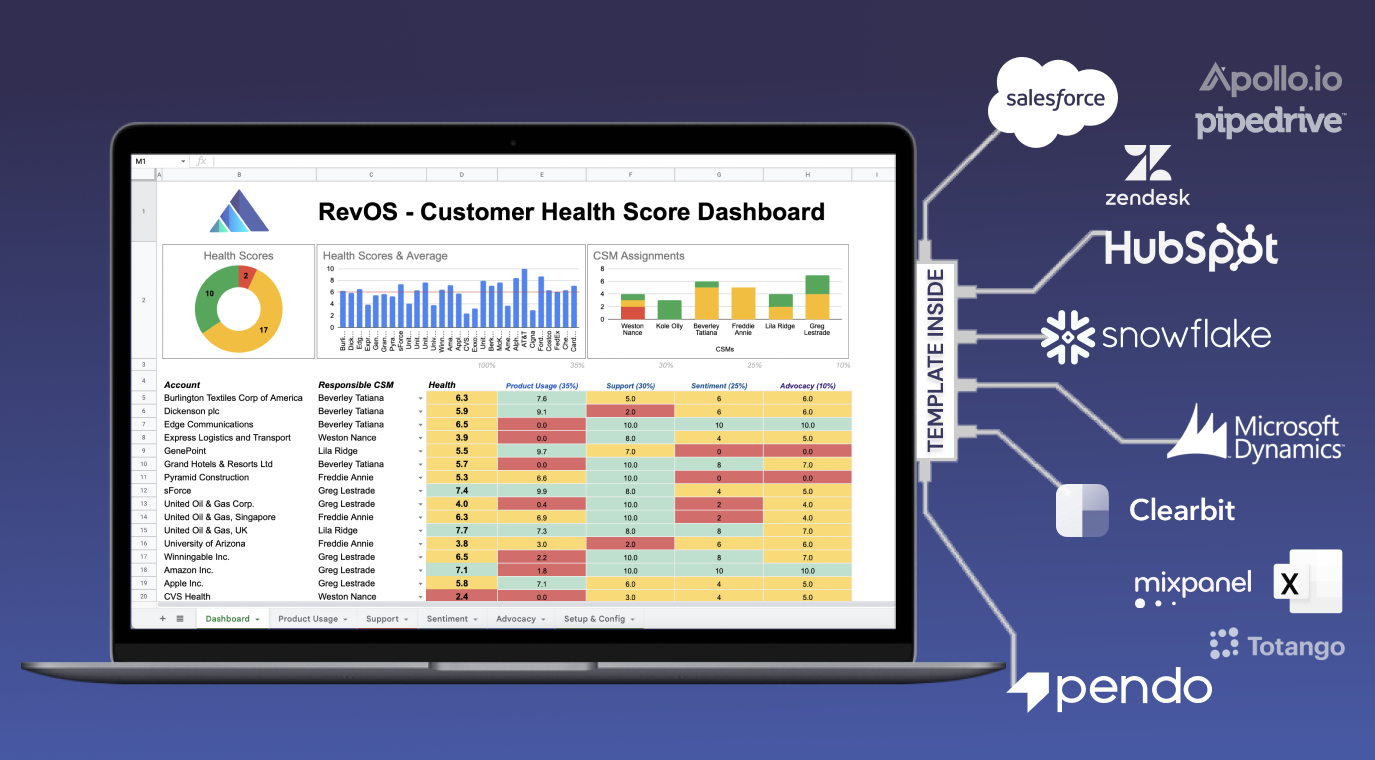License Utilization: The Key to Identifying At-Risk Customers in Time
 Renat Zubayrov
Renat ZubayrovA customer health score criteria, 'License Utilization,' refers to the extent to which a customer is using the licenses they have purchased from a company. It is important because it can indicate the level of engagement and satisfaction a customer has with a company's products or services.
Join us in this article as we explore how License Utilization, a key metric for measuring customer success, can help businesses unlock growth potential and drive greater value for their customers.
High license utilization can suggest that a customer is finding value in the product and is likely to continue using it and potentially purchase additional licenses. Low license utilization can indicate that a customer is not fully utilizing the product and may not be getting the full value out of it, which could lead to dissatisfaction and potentially result in the customer canceling their subscription or not renewing it. Additionally, tracking license utilization can also help a company identify potential areas for improvement in its products or services.
Benchmarks
A good value for license utilization is dependent on the product and how the engagement value is measured. For example, if license utilization is measured as the number of monthly active users divided by the number of purchased licenses, then product usage is controlled on the monthly level. Assuming that an active user is a user that is logging in at least monthly the good license utilization for mature SaaS products should be between 70 and 80% whereas a value below 50% should be considered low.
Advantages
We collected several benefits for including License Utilization as a metric in Customer Health Scoring:
- Improved Customer Health Scoring: License utilization provides valuable insights into how customers are using your products or services, allowing you to better understand their needs and identify areas for improvement.
- Proactive Customer Management: By tracking license utilization, you can identify at-risk customers early and take proactive steps to prevent churn, such as offering additional training or support.
- Increased Revenue: By optimizing license utilization, you can increase customer satisfaction and retention, leading to higher revenue over the long term.
- Better Resource Allocation: License utilization data can help you make more informed decisions about how to allocate resources, such as investing in new features or improving customer support.
- Customizable Metrics: License utilization metrics can be customized to meet the specific needs of your business, allowing you to track and analyze data that is most relevant to your customer health scoring goals.
- Data-Driven Decision Making: By using license utilization data to inform your customer health scoring strategy, you can make data-driven decisions that are based on real-time insights rather than guesswork or assumptions.
- Competitive Advantage: By leveraging license utilization data, you can gain a competitive advantage in your industry by delivering more targeted and personalized customer experiences that drive loyalty and growth.
With the RevOS platform, you can easily track and monitor the health of your customers and accounts across a variety of metrics. Don't miss the chance to drive customer growth through predictive alarms and never miss the chance to react in critical customer events.
Are you ready to take your customer success to the next level?
Try RevOS today and experience the benefits of a reliable and effective Customer Health Score Software and Management solution.
Challenges
Measuring and controlling for license utilization can present several challenges, including:
- Data accuracy: Collecting and tracking accurate data on license utilization can be difficult, especially if the company does not have a system in place for tracking and monitoring usage.
- Complex licensing models: Some companies have complex licensing models that can make it difficult to determine exactly how many licenses a customer is using. For example, some customers may have an ‘Unlimited’ number of licenses, or some products have only placed a limit on the number of concurrent users.
- Users in different roles: many mature products have different user roles and use cases, so for example a monthly active ‘admin’ user should be treated differently from monthly active users in other roles.
- Compliance issues: Ensuring that customers are using licenses in compliance with the terms of the license agreement can be a challenge. Non-compliance can occur due to a lack of education or oversight on the customer's side.
Alternatives
There are a variety of alternative criteria that can be used in addition to or in place of license utilization to measure customer health. Some examples include:
- Customer Retention: This metric measures the percentage of customers who continue to do business with a company over time. High retention rates indicate that customers are satisfied with the company's products or services and are likely to continue using them. Retention measurements can be done using the WAU/MAU ratio or 7-day, 1-month, 3-month, or 12-month retention numbers.
- Net Promoter Score (NPS): This metric measures customer satisfaction by asking customers how likely they are to recommend a company's products or services to others. High NPS scores indicate that customers are highly satisfied and engaged with the company.
- Customer Engagement: This metric measures the level of interaction and activity a customer has with a company's products or services. High engagement can indicate that a customer is finding value in the product and is likely to continue using it. As already described above practical engagement measurements can be tricky, so for example when the value of the product can be seasonal (e.g. end of the financial year).
Start Your Mastery in Customer Success Now
Customer Health Score is an important concept that should help customer success and sales to prioritize customer outreach and communication. It’s simple to grasp but complex to calculate. We created a powerful ready-to-use instrument Customer Health Score Template for calculating multiple KPIs and metrics that aligned to one customer healthcare formula. It is based on the weighted average that gives the value to make it easy to grasp and understand for future actions.

Download a Customer Health Score Template with a video tutorial on how to set up your own scoreboard with an explanation of various aspects of scoring and real case studies from our clients.
Read more about revenue operations, growth strategies, and metrics in our blog and follow us on LinkedIn, Youtube, and Facebook.
← Go back to blog